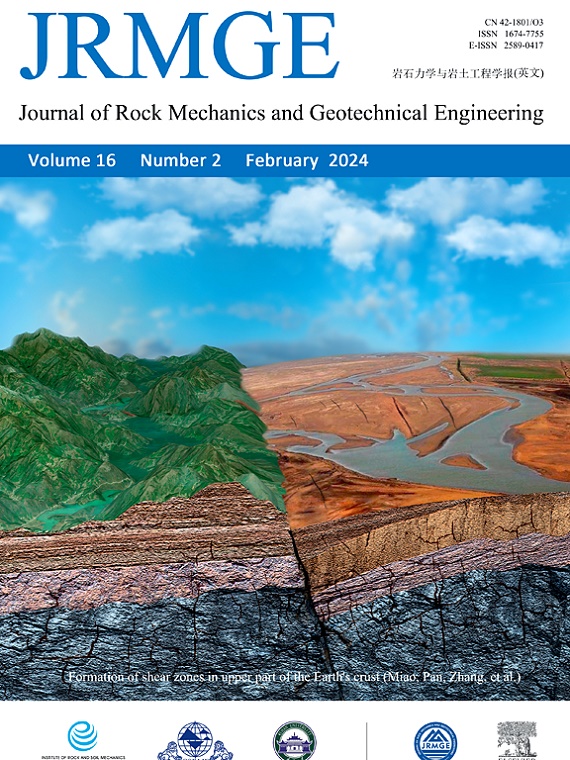Analysis of rockburst mechanism and warning based on microseismic moment tensors and dynamic Bayesian networks
Abstract
One of the major factors inhibiting the construction of deep underground projects is the risk posed by rockbursts. A study was conducted on the access tunnel of the Shuangjiangkou hydropower station to determine the evolutionary mechanism of microfractures within the surrounding rock mass during rockburst development and develop a rockburst warning model. The study area was chosen through the combination of field studies with an analysis of the spatial and temporal distribution of microseismic (MS) events. The moment tensor inversion method was adopted to study rockburst mechanism, and a dynamic Bayesian network (DBN) was applied to investigating the sensitivity of MS source parameters for rockburst warnings. A MS multivariable rockburst warning model was proposed and validated using two case studies. The results indicate that fractures in the surrounding rock mass during the development of strain-structure rockbursts initially show shear failure and are then followed by tensile failure. The effectiveness of the DBN-based rockburst warning model was demonstrated using self-validation and K-fold cross-validation. Moment magnitude and source radius are the most sensitive factors based on an investigation of the influence on the parent and child nodes in the model, which can serve as important standards for rockburst warnings. The proposed rockburst warning model was found to be effective when applied to two actual projects.

 求助内容:
求助内容: 应助结果提醒方式:
应助结果提醒方式:


